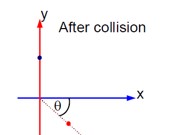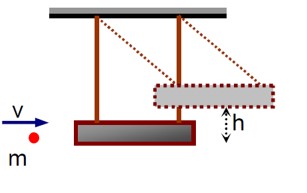Work, Energy and Power
Get insights from 177 questions on Work, Energy and Power, answered by students, alumni, and experts. You may also ask and answer any question you like about Work, Energy and Power
Follow Ask QuestionQuestions
Discussions
Active Users
Followers
New answer posted
2 months agoContributor-Level 10
ΔE = have = 13.6Z² (1/n? ² - 1/n? ²)eV.
hv = 13.6 (1²) (1/n² - 1/ (n+1)²) = 13.6 (n+1)²-n²)/ (n² (n+1)²)
v = (13.6/h) * (2n+1)/ (n² (n+1)²). For n>>1, v ≈ (13.6/h) (2n/n? ) ∝ 1/n³.
New answer posted
2 months agoContributor-Level 10
Let AC = l, BC = 2l, AB = 3l
Apply work-Energy theorem
W? + W? = ΔKE
Mg (3l)sinθ - µmgcosθ (l) = 0+0
µmgcosθl = 3mglsinθ
µ=3tanθ = ktanθ
∴ k=3
New answer posted
2 months agoContributor-Level 10
P = constant
m (dv/dt) = P
∫? vdv = P/m ∫? dt
v²/2 = Pt/m ⇒ v = (2Pt/m)¹/²
dx/dt = √ (2P/m) t¹/²
∫? dx = √ (2P/m) ∫? t¹/² dt
x = √ (2P/m) (t³/² / (3/2) = √ (2P/m) * (2/3) * t³/²
= (2/3) * 27 = 18
New answer posted
3 months agoContributor-Level 10
Using conservation of linear momentum, we can write
P? = P? ⇒ mv = (M+m)V
Using conservation of Mechanical energy, we can write
½ (M+m)V² = (M+m)gh ⇒ V = √2gh
⇒ v = (M+m)/m)√2gh
= (6/0.01)√ (2*9.8*0.098) = 600 * 1.386 = 831.4 m/s
Taking an Exam? Selecting a College?
Get authentic answers from experts, students and alumni that you won't find anywhere else
Sign Up on ShikshaOn Shiksha, get access to
- 65k Colleges
- 1.2k Exams
- 679k Reviews
- 1800k Answers




